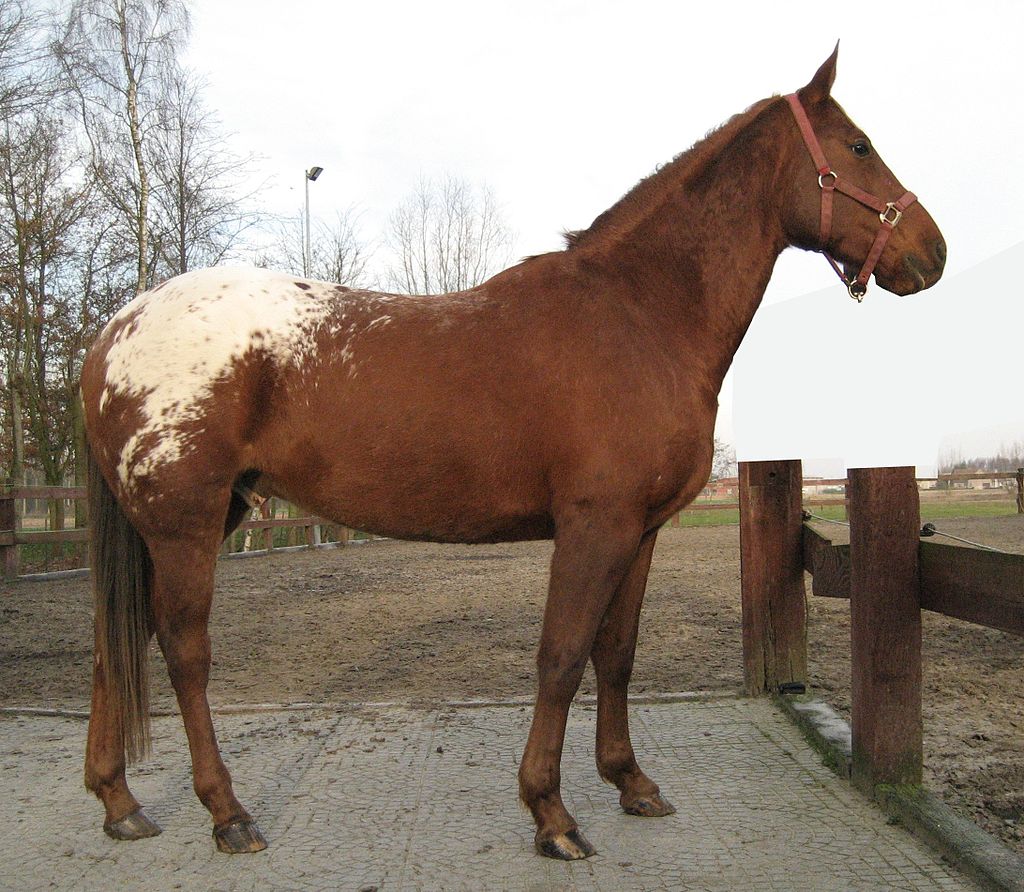The Appaloosa horse
Do you want to know everything about the Appaloosa? Characteristics and aptitudes, morphology, and uses of the animal: discover our detailed sheet to know everything about this horse.

Caractère et aptitudes du cheval
Currently, it is one of the most popular breeds in the United States. Crossbreeding took place with the Quarter Horse to improve its conformation and speed. The Appaloosa Horse Club France was founded in 1985 and the breed was recognized by the National Stud in 1997. The Appaloosa horse must have at least one regular Appaloosa parent, the second parent can be a Quarter Horse or a Thoroughbred or an Arabian.
Utilisations du cheval
Versatile horse, sought after for ranching, used in western riding, and appreciated in driving, dressage, cross-country, endurance, circus. It is also a pleasant horse to ride.
Note that the term Appaloosa refers to a breed of American saddle horses and a coat.
Also, wearing this coat does not imply that the horse is necessarily an Appaloosa. The Appaloosa is a descendant of horses introduced in America in the sixteenth century by the Spanish Conquistadores, from Andalusian containing spotted lines. It was created and developed in the 17th and 18th centuries by the Nez Perce Indian tribes along the Palouse River in the states of Idaho and Washington.
It was called, therefore, the Palouse horse or Palouse. After a careful selection, the Indians made it a rustic and versatile horse.
At the end of the 19th century, the Indian tribes were practically wiped out by the settlers.
This breed would have disappeared without the work of inventory and selection of Claude Thompson which led to the creation of the American Appaloosa Horse Club, in 1938, in Moscow (Idaho), with opening of the Studbook and the name of Appaloosa is then definitively adopted.
Morphologie du cheval
Small head. Wide forehead. Rectilinear profile. Pronounced ganache. Ears pointed, of medium size. Eyes large, circled with white. White sclera. Compact body, gathered, with the developed musculature. Elongated, muscular neck. Withers rather prominent. Long, sloping shoulders. Broad chest. Deep chest. Short, strong, straight back. Short, strong loins. Hindquarters particularly developed, powerful. Rounded, muscular croup. Limbs relatively short, solid, robust. Well developed bones. Short cannons. Extremely hard feet. Hooves round, streaked with white and black vertical lines. Short tail with few manes. Spotted coat. Colors and patterns can be combined endlessly to produce coats unique to each horse. But spots are not enough to recognize an Appaloosa horse, and there are also solid-color horses.
There are four main characteristics to recognize an Appaloosa:
- The hoof must be vertically striated.
- The skin must be naturally laced and not by depigmentation. (Pinking nostrils and mucous membranes).
- The sclera of the eye must be white.
- A spotted coat. To be Appaloosa, it is necessary to have at least two characteristics including imperatively the spotted coat or the depigmentation.
Types of coats:
- Bay: white spots on the hindquarters; on the face: star, spotting. Legs: white markings on the hindquarters, half-balzan (horse with a sock) on the left hindquarters and a white crown on the right hindquarters.
- White: black spots on the whole body. No markings on the face and legs.
- Chestnut: white with spots on the hindquarters. Face: star, blaze on the muzzle, spotting.
Legs: balzane (white socks) on the right hindquarters.
- Grulla: white with spots on the loins and the hindquarters. Face: star and list that drinks in its milk. Legs: white pastern on the left foreleg, white crown on the right foreleg, half balzane on the right hindleg.
- Palomino: hindquarters with white spots. Face: star, list, drinks in its milk. Leg: balzanes on all four limbs.
- Blue roan: white with spots. Face: no markings. Legs: half balzane on the left hindquarters. Size: from 1,45 to 1,63 m. Weight: from 450 to 700 kg.
For more information: Appaloosa
To give your sport and leisure horse the best possible diet, discover Royal-Horse’s S-200 and S-250 pelleted and flaked supplementary feeds!


